Category / REF Subjects
Vitae briefing documents for REF 2014
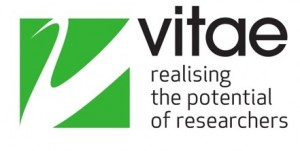 Vitae has produced “REF 2014: Briefing for Researcher Developers‘” in order to support those who are preparing submission and to enhance the quality of their environmental narrative. This can be found here
Vitae has produced “REF 2014: Briefing for Researcher Developers‘” in order to support those who are preparing submission and to enhance the quality of their environmental narrative. This can be found here
There is a also a “REF 2014: Summary for Submitting Units” which provides a useful at a glance guide, can be found here
These are HEFCE approved documents which highlight the importance of development activities.
Face Blindness Public Awareness Campaign Gets Underway!
Research from BU’s Centre for Face Processing Disorders was featured in a CBBC documentary today. The film was entitled ‘My life: Who are you?’ and followed the journey of Hannah, a teenager with face blindness, as she participated in one of our training programmes and discusses the difficulties of everyday life. The documentary also featured Hannah meeting another girl with face blindness for the first time, and her encounter with Duncan Bannatyne who also has the condition.
We are so pleased with the documentary, and felt the producers did an excellent job in portraying the condition with scientific accuracy, and in demonstrating the difficulties associated with face blindness. Despite Hannah’s struggles she still maintains a positive attitude to life and the film does an excellent job of presenting her as the remarkable young lady that she is, who was so keen to make the film in order to raise public awareness of the condition. Hannah’s story illustrates how life can be affected by brain injury, but her remarkable positivity shines through as the programme follows her journey.
If you missed the programme you can watch it here:
http://www.bbc.co.uk/iplayer/cbbc/episode/b01rlyc9/My_Life_Who_Are_You/
We recently launched an e-petition that aims to promote public and professional awareness of prosopagnosia by campaigning for its discussion in the House of Commons. We need to gain 100,000 signatures to make this happen, so if you were moved by the documentary, please do add your signature:
http://www.prosopagnosiaresearch.org/awareness/e-petition
Our public awareness campaign has only just taken off so watch this space for more activities!
Open Access journals: Remember to check for changes!
 BUI Research BlogThe BU Research blog has seen various pieces on Open Accessing Publishing, including http://blogs.bournemouth.ac.uk/research/bu-internal-funding-opportunities/open-access-publication-fund/ or http://blogs.bournemouth.ac.uk/research/files/2011/08/Open-Access-Fund-policy-180711.pdf). Moreover, Bournemouth University professors are actively involved in Open Access journals. For example Prof. Vanora Hundley and I are both Associate Editors of a major Open Access journal (see: http://blogs.bournemouth.ac.uk/research/2012/10/23/prof-hundley-associate-editor-bmc-pregnancy-childbirth/ .
BUI Research BlogThe BU Research blog has seen various pieces on Open Accessing Publishing, including http://blogs.bournemouth.ac.uk/research/bu-internal-funding-opportunities/open-access-publication-fund/ or http://blogs.bournemouth.ac.uk/research/files/2011/08/Open-Access-Fund-policy-180711.pdf). Moreover, Bournemouth University professors are actively involved in Open Access journals. For example Prof. Vanora Hundley and I are both Associate Editors of a major Open Access journal (see: http://blogs.bournemouth.ac.uk/research/2012/10/23/prof-hundley-associate-editor-bmc-pregnancy-childbirth/ .
This blog highlights that journals can change and that some become Open Access that were not before. This happened to some of my methods papers in the scientific journal of the Faculty of Sexual and Reproductive Healthcare of the Royal College of Obstetricians and Gynaecologists (RCOG). Their journal the Journal of Family Planning & Reproductive Health Care used to be published in house as one of the RCOG journals. The journal had a fairly closely defined readership and a very traditional way of paper-based publishing. This meant very few academics, practitioners or students had access to my papers published over the years in the Journal of Family Planning & Reproductive Health Care. Then, a year or two ago, the journal became part of the BMJ Group (http://group.bmj.com/), which publishes over 40 journals in the health and health care field.
The deal between the Journal of Family Planning & Reproductive Health Care and the BMJ Group must include some arrangement to make previous issues available through Open Access. All of a sudden seven of my research methods papers are freely available on the web through Open Access [1-7]. One of the key messages here is that it is worthwhile to see which journals offer Open Access, and to check regularly for changes in journals’ policies and publishers.
Prof. Edwin van Teijlingen, School of Health & Social Care, Bournemouth University
References:
- van Teijlingen, E.R., Forrest, K. (2004) The range of qualitative research methods in family planning and reproductive health care, Journal of Family Planning & Reproductive Health Care 30(3): 171-73.
- Forrest Keenan, K., van Teijlingen, E.R. (2004) The quality of qualitative research in family planning and reproductive health care, Journal of Family Planning & Reproductive Health Care 30 (4): 257-59.
- Forrest Keenan, K., van Teijlingen, E.R., Pitchforth, E. (2005) The analysis of qualitative research data in family planning and reproductive health care, Journal of Family Planning & Reproductive Health Care 31(1): 40-43.
- Pitchforth, E., Porter, M., van Teijlingen, E.R., Forrest Keenan, K. (2005) Writing up and presenting qualitative research in family planning and reproductive health care, Journal of Family Planning & Reproductive Health Care 31 (2): 132-135.
- van Teijlingen, E., Hundley, V. (2005) Pilot studies in family planning and reproductive health care, Journal of Family Planning & Reproductive Health Care 31 (3): 219-221.
- van Teijlingen, E.R., Pitchforth, E. (2006) Focus Group Research in Family Planning and Reproductive Health Care, Journal of Family Planning & Reproductive Health Care 32 (1): 30-32.
- van Teijlingen, E.R., Pitchforth, E., Bishop, C., Russell, E.M. (2006) Delphi method and nominal group techniques in family planning and reproductive health research, Journal of Family Planning & Reproductive Health Care 32 (4): 249-252.
CEMP Research & Innovation Bulletin
Here is the updated CEMP Research & Innovation bulletin and agenda for the next cluster meeting – CEMP Cluster bulletin and agenda 28.3.13_KE
The cluster meeting is on Thursday March 28th, 9.30-11.30 in the CEMP office.
Thanks to Kris Erickson for these updates.
The ‘thinktank’ reading for discussion at the meeting is SURRENDERING THE SPACE Convergence culture, Cultural Studies and the curriculum
Thanks to Ashley Woodfall for this.
Expressions of interest in the funding opportunities in the bulletin and / or to confirm meeting attendance, please email julian@cemp.ac.uk.
Dr. Justine Pila from University of Oxford will present at the 2nd CIPPM Spring Lecture
Dr. Justine Pila, Lecturer in Intellectual Property Law at University of Oxford and Senior Law Tutor at St. Catherine’s College will speak on ‘The Europeanisation of Intellectual Property Law: Towards a European Legal Methodology’ at the 2nd CIPPM Spring Lecture Series.
The Lecture will be held on Thursday 21 March 2013 in EB708 and will start at 6 pm with refreshments served from 5 pm onwards.
Dr. Pila’s main areas of research are copyright and patent law in all of their doctrinal, theoretical and historical aspects. She has published widely in this area. Her book titled ‘The Require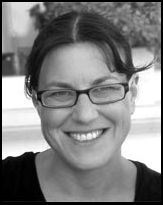 ment for an invention in Patent Law’ was published by Oxford University Press in 2010. With Professor John Gardner she co-edits the two Oxford Legal Research Paper Series, in addition to serving as legal advisor to the Oxford Magazine. She also convenes the Law Faculty’s Intellectual Property subject group and teaches on all of its IP programmes, including the two FHS (undergraduate) IP options, the BCL option, and the Postgraduate Diploma in IP Law and Practice.
ment for an invention in Patent Law’ was published by Oxford University Press in 2010. With Professor John Gardner she co-edits the two Oxford Legal Research Paper Series, in addition to serving as legal advisor to the Oxford Magazine. She also convenes the Law Faculty’s Intellectual Property subject group and teaches on all of its IP programmes, including the two FHS (undergraduate) IP options, the BCL option, and the Postgraduate Diploma in IP Law and Practice.
The lectures are free to attend, but places are limited, and admission to the building closes at 18:15. If you wish to reserve a place, please contact Mandy Lenihan.
CEMP and CIPPM Researchers co-publish reports on parody for the UKIPO
Dr. Kris Erickson (CEMP), Dr. Dinusha Mendis and Professor Martin Kretschmer (CIPPM) have co-authored a series of reports commissioned by the UK Intellectual Property Office (UKIPO) on parody and pastiche. Empirical and legal research is presented in a sequence of three reports published by the UKIPO in March 2013. The three studies commissioned by UKIPO evaluate policy options in the implementation of the Hargreaves Review of Intellectual Property & Growth (2011).
Study I authored by Dr. Kris Erickson presents new empirical data about music video parodies on the online platform YouTube
Study II authored by Dr. Dinusha Mendis and Professor Martin Kretshcmer offers a comparative legal review of the law of parody in seven jurisdictions
Study III authored by Dr. Kris Erickson, Professor Martin Kretschmer and Dr. Dinusha Mendis provides a summary of the findings of Studies I & II, and analyses their relevance for copyright policy.
All three reports can also be found here
Study I presents new empirical data about music video parodies. A sample of 8,299 user-generated music video parodies was constructed relating to the top-100 charting music singles in the UK for the year 2011.
Study II discusses of the legal treatment of parodies in seven jurisdictions that have implemented a copyright exception for parody. The jurisdictions include Australia, Canada, France, Germany, Netherlands, UK, and USA. Study II identifies possible regulatory options for benefiting from a parody exception to copyright infringement, and distils the (economic and non-economic) rationales developed by legislators and courts. The report concludes by setting out a list of policy options.
Study III brings together the legal analysis and the empirical data. Each of the policy options identified in Study II is examined for its likely impact on the empirical sample gathered in Study I.
The research team comprising of Dr. Kris Erickson, Dr. Dinusha Mendis and Professor Martin Kretschmer presented the following key findings arising from the three Studies:
- Parody is a significant consumer activity: On average, there are 24 user-generated parodies available for each original video of a charting single.
- There is no evidence for economic damage to rights holders through substitution: The presence of parody content is correlated with, and predicts larger audiences for original music videos.
- The potential for reputational harm in the observed sample is limited: Only 1.5% of all parodies sampled took a directly negative stance, discouraging viewers from commercially supporting the original.
- Observed creative contributions were considerable: In 78% of all cases, the parodist appeared on camera (also diminishing the possibility of confusion).
- There exists a small but growing market for skilled user-generated parody: Parodists who exhibit higher production values in their works attract larger audiences, which can be monetized via revenue share with YouTube.
My Swedish visit
For the past couple of years those of us in the Centre for Media history have been building up our relationship with Lund University where Media History is taught and actively researched. The connection owes a lot to my colleague, Kristin Skoog, who is Swedish but specialises in BBC radio history.
Although I have visited Lund a number of times I have only now spent a week here and in my role as a Visiting Fellow I was asked to contribute to the teaching and research programme.
So I found myself talking to a group of possibly bemused second year undergraduates about BBC radio broadcasts during the second world war. Maybe this was a bit reckless because, as you may know, Sweden was officially neutral during the war and I did wonder how they would respond to the rather gung-ho nature of BBC war reporting. In fact they were very interested and perceptive in their comments.
My next task was to interview two media history PhD students with their supervisors present. Despite not really knowing much about their subjects the conversation seemed to be productive and I certainly learned a lot (about the history of A4 (!) and ‘balloonings’ in Stockholm).
My main challenge was to address the impressive media history research seminar and this time I was prepared with my latest, not entirely legally obtained, audio from the BBC sound archive on the Suez crisis of 1956. Surprisingly I saw in the audience Bente Larsen, a leading figure in Danish radio archives who had popped over ‘the bridge’ (yes, that bridge) to listen. I followed the very impressive and calm young Danish academic, Heidi Svømmekjær, and all went well.
I should add that I do not speak a word of Swedish and so could not use the library. But everyone in Sweden seems to speak very good English.
It has been an extremely stimulating and valuable experience and I would be happy to talk to anyone out there who is interested in building Swedish links.
One final comment; as a guest I was given my own profile page on the Lund University website http://www.kom.lu.se/en/research/mediehistoria/guest-researcher/ What a shame we at Bournemouth are not able to design web profiles of this standard!
Hugh Chignell, Professor of Media History, The Media School. 15.3.2013
Squeezing the pips from a conference with social media
Please forgive the self-publicity, but I would like to share my recent use of social media to promote BU, research, a conference and papers.
Last week, I attended the annual International Public Relations Research Conference (IPRRC) in the US, where I presented three papers, one with a US co-author. It’s the largest conference in the field, drawing 101 papers over three days and attendance in the order of 150-175 academics, graduates and some practitioners.
To broadcast involvement in the conference, I used my personal blog to present a daily summary of interesting papers: http://fiftyonezeroone.blogspot.co.uk/. The blog posts have had over 210 visits so far and were also circulated on LinkedIn, Twitter and Google+. There have been many re-tweets (RTs), plus appreciative emails and direct messages via Twitter.
A short summary of “top 10 research tips” was written for the prmoment.com website which has around 30,000 users, worldwide. It was posted on the site’s blog and is included in this week’s publication: http://blog.prmoment.com/ten-pr-research-tips-from-bournemouth-universitys-professor-tom-watson/
The outcomes of this type of activity will be long-term and hard to measure, but as I was the only UK delegate at IPRRC this year, it has given BU, our research and industry knowledge an international platform of expertise and insight to present ourselves. The capital cost was almost nil, as I used my own netbook, Wi-Fi was free and the time component was less than an hour a day. Try this approach at your next conference or internal event.
CEMP Research & Innovation Bulletin 14.3.13
The CEMP Research & Innovation Cluster bulletin for the meeting on 14.3.13 is here: Cluster bulletin and agenda 14.3.13.
The focus of the cluster is pedagogic research and innovation. Any colleagues interested in collaborating with CEMP to pursue any of the funding opportunities in the bulletin – please email Julian McDougall.
Cluster meetings take place every other Thursday. In the Thursdays in between, the bulletin will be posted here.
Seminar on Autonomous Systems & Robotics for Future Cities
We would like to invite you to our next Software Systems Research Centre seminar given by Prof. Carsten Maple on “Autonomous Systems & Robotics for Future Cities”
Room: P410 (Poole House, Talbot Campus)
Time: 14:00 – 15:00
Date: Friday, 15-March-2013
Title: Autonomous Systems & Robotics for Future Cities
Abstract. Autonomous and robotic systems provide technical aids in the modern living environment. Considerable effort and investment have been made in blending sensing, control and feedback, user interfaces, information processing and hardware for such systems. This talk will present an overview of the current development. Examples will be demonstrated from research conducted at the University of Bedfordshire through EU funded projects (e.g. shadow robot systems to assist the elderly / disabled at home). Discussions will be made on future perspectives of these systems for modern city life.
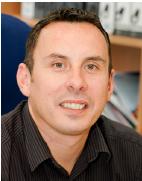
Biography. Professor Carsten Maple is Pro Vice Chancellor – Research and Enterprise, University of Bedfordshire, UK. He graduated with a BSc in mathematics and a PhD in numerical analysis from the University of Leicester. He is a Fellow of the British Computer Society (FBCS) and a Chartered IT Practitioner (CITP). Professor Maple is editor / guest editor for several international journals such as International Journal of Grid Computing, International Journal of Modelling, Identification and Control. He has been chairman for a number of international conferences such as IEEE International Conference on Parallel Computing, International Conference on Information Visualisation, and International Symposium on Applications of Graph Theory. He has been invited to present keynote speeches to various international conferences. He has published over 150 papers internationally. He has been invited to talk on security, syberstalking, robotics and applied computing on UK Parliament, radio and TVs.
Media School team wins US grant for CSR research
A three-member Media School research team has been awarded a grant for research into Corporate Social Responsibility communication amongst employees.
Dr Tasos Theofilou, Dr Georgiana Grigore and Prof Tom Watson (L-R) gained the grant from the Arthur W. Page Center for Integrity in Public Communication, a research center at the Penn State College of Communications.
They will be conducting a study in the UK and Romania to link with a previous study undertaken in Greece by Dr Theofilou. The study supports travel and the employment of research assistants for research in summer this year. Prof Watson, the project PI, has been named as a Page Legacy Scholar for 2013.
“Within the Media School’s Public Relations Research Group (the PRRes Gang), there is considerable expertise in CSR,” said Prof Watson.
“Dr Grigore is an organiser of an international CSR conference to be held at BU in the autumn, whilst Dr Theofilou is pioneering research into harnessing ‘scepticism’ as a factor in developing effective CSR communication within corporate organisations.
“This grant is very positive recognition of BU’s standing internationally within public relations and corporate communications research.”
# Arthur W. Page was a highly respected pioneer of public relations and corporate communications in the US from the late 1920s to the late 1940s at the telecoms giant, AT&T.
Fusion Investment Fund – UAS Partnership
A new Fusion fund travel grant has been awarded to Dr. Ben Thomas, lecturer in the School of Design, Engineering and Computing (DEC) in order to help develop an important strategic relationship with the University of Applied Sciences (UAS) in Wurzburg, Germany. The hope is that through collaboration and the sharing of important engineering resources both institutions will be able to deliver an improved experience to their students.
UAS was founded in 1971 as an Institute of Technology with departments in Würzburg and Schweinfurt, its focus is on business, design and engineering education, with a well-developed reputation for knowledge transfer and professional industrial research partnerships. With nearly 8,000 students UAS is the third largest of the 17 state run universities of applied sciences in Bavaria. UAS is notable for having excellent laboratory resources with over 20 dedicated research labs in the Faculty of Industrial Design alone, covering research topics from microwave engineering to dedicated polymer testing, with an emphasis on materials testing.
The facilities and expertise at UAS are very important to BU as these will support current DEC activities, particularly with the adoption of the new MEng course and the laboratory resources for the experimental final year projects this will require. The business and enterprise expertise at UAS will also directly benefit the existing BA course in Design Business Management.
It is hoped that this relationship will include research collaboration with the activities of the Sustainable Design Research Centre (SDRC), with initial discussions including existing BU research looking at RNLI marine engine oil condition monitoring, and two newly awarded match funded studentships entitled ‘Recyclable Materials Applied to Small Marine Leisure Craft’ and ‘An Optimised Tidal Energy Design for Poole Harbour’. These will benefit greatly from the extensive materials testing facilities available at UAS allowing greater research detail to be developed.
It is intended that UAS students and academics will visit BU regularly under the banner of the SDRC for research projects, seminar presentations and to discuss further research and academic collaboration.
Dr. Dinusha Mendis interviewed by BBC on her research into 3D Printing and IP Law
 Dr. Dinusha Mendis has published a paper on 3D Printing and its implications for Intellectual Property Law titled ‘“The Clone Wars”: Episode 1 – The Rise of 3D Printing and its implications for Intellectual Property Law: Learning Lessons from the Past?’ The paper was published in the European Intellectual Property Review in February 2013 (pp. 155-169).
Dr. Dinusha Mendis has published a paper on 3D Printing and its implications for Intellectual Property Law titled ‘“The Clone Wars”: Episode 1 – The Rise of 3D Printing and its implications for Intellectual Property Law: Learning Lessons from the Past?’ The paper was published in the European Intellectual Property Review in February 2013 (pp. 155-169).
In drawing parallels with the entertainment industry and online piracy, this paper highlights the challenges which will be faced by the current Intellectual Property (IP) laws as a result of 3D printing and suggests that rather than focus on stringent IP laws the future lies in adopting new business models in adapting to this new technology. To this effect, the paper suggests some recommendations for the future.
Following the publication of the paper, Dr. Mendis was interviewed by BBC 5Live ‘Outriders’ programme – a programme dedicated to exploring the frontiers of the web. The interview was broadcast on 19 February 2013 and is available here http://www.bbc.co.uk/podcasts/series/pods (the relevant section of the interview can be accessed at 15.45 minutes of the programme).
In this interview Dinusha speaks to BBC’s Jamillah Knowles about her paper and the challenges which will be faced by intellectual property laws in the wake of 3D printing.
Tales from the Sea – Maritime Archaeology and Dementia – an innovative journey!
Bournemouth University School of Applied Sciences and Dementia Institute have joined forces to create the Tales of the Sea project in order to be all inclusive in the appreciation of our heritage. Paola Palma, MSc Maritime Archaeology Programme Coordinator, and Clare Cutler BUDI Research Assistant (Society and Social Welfare) in the School of Health and Social Care will work on this project that combines maritime archaeology and dementia, to create a series of interactive marine archaeological sessions specifically for people with dementia. Five venues in the Bournemouth area will be selected to host sessions where BU staff and students will deliver a maritime archaeological experience to an audience who may not normally engage in such activities. These sessions are designed to be educational, stimulating and inclusive.
Participants will be encouraged to take part in the interactive activities which will include a mini archaeological ‘excavation’ and the handling of maritime objects and archaeological replica’s. The activities are specifically designed to encourage interaction and sensory participation for those with dementia. We hope that the participants will have their own Tales of the Sea to share!
Fusion Investment Fund – Decreasing spatial disorientation: towards dementia-friendly environments
Dr Jan Wiener (DEC) and myself are delighted to have been awarded Fusion funding to develop a student driven research programme to investigate navigation and orientation skills in people with dementia.
Spatial disorientation is among the earliest indicators of dementia, an increasingly common condition in our ageing society that currently costs the UK £23 billion annually. We aim to develop an inter-disciplinary eye-tracking research programme to investigate factors that affect spatial disorientation in people with dementia. Data gathered will be used to formulate design principles for dementia-friendly care homes, potentially reducing care costs, and leading to new knowledge with significance and reach.
To record gaze when solving wayfinding tasks, we will combine eye-tracking, head tracking and virtual reality (VR) technology. Participants will stand or sit in front of an array of large monitors arranged in a semi-circle that subtends their entire horizontal visual field and affords natural viewing behaviour. In order to create this unique and technically advanced research environment, students from DEC, HSC and the Media School will collaborate as researchers, increasing their skills through immersive experience on a well-designed, cutting-edge research programme.
This will give ambitious students with different backgrounds a unique opportunity to work co-operatively as part of a high-level, well-resourced multi-disciplinary team. We will share the knowledge we gain on improving dementia care home design with the academic community, practitioners, service providers, and the general public. These links will in turn enable us to form strategic local and national partnerships to ensure that the knowledge gained has an impact on professional practice.
Dr Mariela Gaete Reyes (HSC/BUDI) & Dr Jan Wiener (DEC)
CIPPM Spring Lecture Series 2013
The annual series of the Centre for Intellectual Property Policy and Management’s (CIPPM) http://www.cippm.org.uk/ Spring Lectures starts on Thursday 21 February 2013 at 6 pm.
Professor Hector MacQueen, Professor of Private Law at the University of Edinburgh will deliver the first lecture, titled “Ae fond kiss: A Private Matter?” on Thursday 21 February 2013.
Professor MacQueen has written extensively on Intellectual Property law and is author, co-author and editor of a number of books on Intellectual Property law. He was the Dean of the Faculty of Law, University of Edinburgh (1999-2003) and Director of the AHRC Centre for Studies in Intellectual Property and Technology Law (SCRIPT) (2002-2007). In 2010 Professor MacQueen took up an appointment as Scottish Law Commissioner (2010-2014).
law and is author, co-author and editor of a number of books on Intellectual Property law. He was the Dean of the Faculty of Law, University of Edinburgh (1999-2003) and Director of the AHRC Centre for Studies in Intellectual Property and Technology Law (SCRIPT) (2002-2007). In 2010 Professor MacQueen took up an appointment as Scottish Law Commissioner (2010-2014).
CIPPM Spring Lectures take place at 18:00, in the Executive Business Centre, close to the Bournemouth Travel Interchange (89 Holdenhurst Road, BH8 8EB). The lectures are free to attend, but places are limited, and admission to the building closes at 18:15. If you wish to reserve a place, please contact Mandy Lenihan at ALenihan@bournemouth.ac.uk
For further information on forthcoming CIPPM Spring Lectures and for booking information see http://business.bournemouth.ac.uk/news/2013/jan/ne001-cippm-lectures-2013.html
Euro PR history network backed by Fusion
A proposal to develop an innovative Europe-wide network of researchers in the history of public relations field has been supported by the Fusion Investment Fund (FIF).
The European Public Relations History Network (EPRHN) was formed in mid-2012 by Prof Tom Watson and backed by EUPRERA (European Public Relations Education & Research Association) as a priority project for the next three years. It was set up to identify archives and resources, undertake collaborative research, and prepare bids to European research bodies and PR industry organisations.
The field of public relations history has been developed at BU over the past four years, mainly through the establishment of the International History of Public Relations Conference (IHPRC).
Prof Watson said: “there has been increasing interest in the conference and PR historical research in Europe over the past 3-4 years but it has largely focused on national histories, personalities or phenomena. Collaborative research, across national boundaries, has yet to emerge. There is little shared knowledge of archival resources, where they exist or can be created.”
So far, 35 academics and practitioners from 12 countries have shown their interest in EPRHN. Its first publication, a catalogue of archives and resources in seven countries has just been published. A EPRHN planning meeting will be held at BU after IHPRC in June.
Within The Media School, the network will also help develop European aspects of the Centre for Media History (CMH). CMH is already developing relationships with universities in Sweden and northern Germany. CMH and EPRHN will, it is hoped, foster the recruitment of PGR students interested in media and communication historical research.
The Fusion funding will allow EPRHN to hold a planning event at BU after IHPRC in late June and for Prof Watson and Dr Tasos Theofilou, who is working with him on both PR history projects, to attend EUPRERA’s annual conference in Barcelona in October. At EUPRERA, they will hold the network’s first formal meeting and workshop. [Photos by Minna-Liisa Nurmilaasko, PROCOM Finland].















 New Nepal scoping review on maternal & neonatal health
New Nepal scoping review on maternal & neonatal health Fourth INRC Symposium: From Clinical Applications to Neuro-Inspired Computation
Fourth INRC Symposium: From Clinical Applications to Neuro-Inspired Computation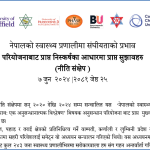 Writing policy briefs
Writing policy briefs Upholding Excellence: The Concordat to Support Research Integrity
Upholding Excellence: The Concordat to Support Research Integrity ECR Funding Open Call: Research Culture & Community Grant – Application Deadline Friday 12 December
ECR Funding Open Call: Research Culture & Community Grant – Application Deadline Friday 12 December MSCA Postdoctoral Fellowships 2025 Call
MSCA Postdoctoral Fellowships 2025 Call ERC Advanced Grant 2025 Webinar
ERC Advanced Grant 2025 Webinar Horizon Europe Work Programme 2025 Published
Horizon Europe Work Programme 2025 Published Horizon Europe 2025 Work Programme pre-Published
Horizon Europe 2025 Work Programme pre-Published Update on UKRO services
Update on UKRO services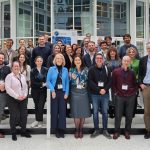 European research project exploring use of ‘virtual twins’ to better manage metabolic associated fatty liver disease
European research project exploring use of ‘virtual twins’ to better manage metabolic associated fatty liver disease